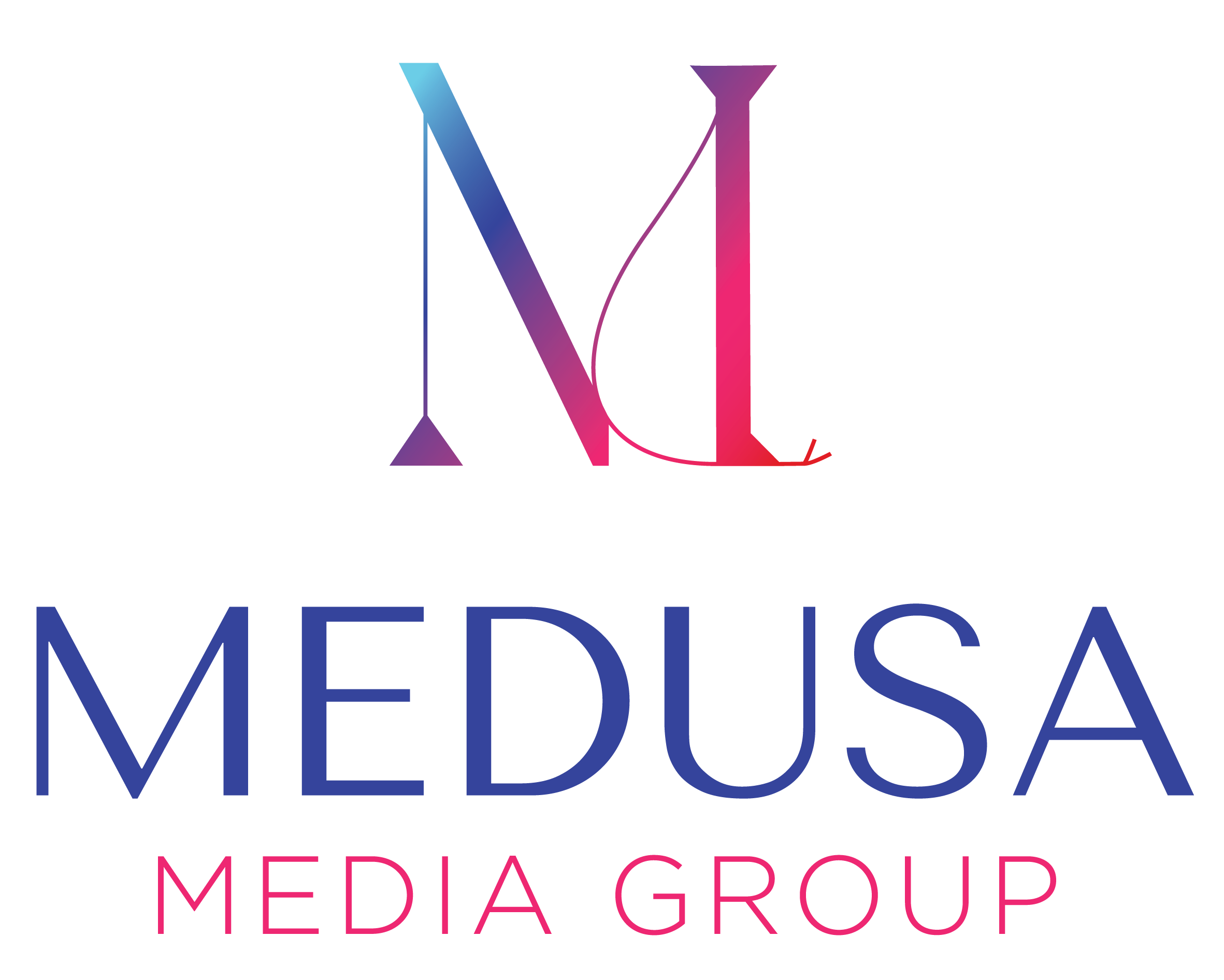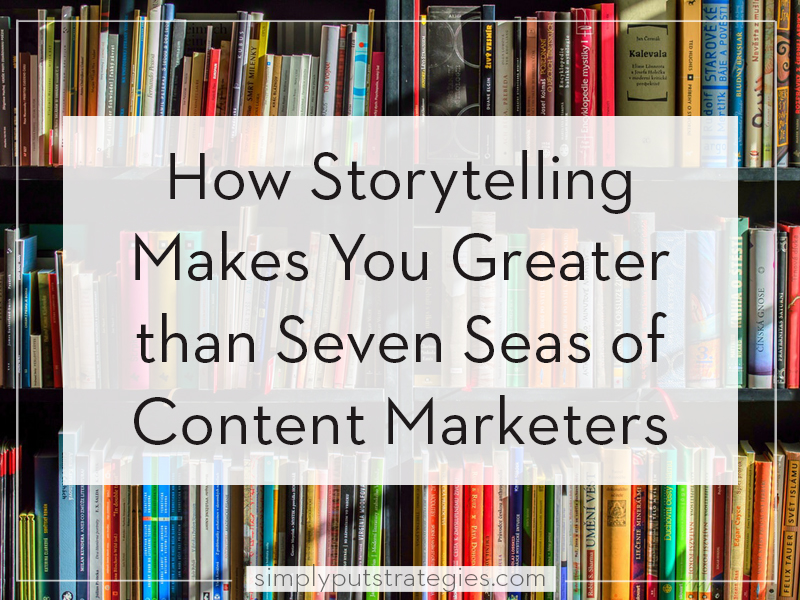
Alright, here’s the problem. A lot of the digital marketing I see goes something like this:
“Suffering from [pain point]? Wish you could [benefit] and [benefit] instead?
Join/Download/Discover/CTA this [PDF/webinar/course] to enjoy [desirable outcome that sounds dramatic or cheeky].”
It’s familiar because it’s a popular strategy; it’s popular because it works (I know, I know). I’m sure you’ve heard the advice to “identify the pain points,” “emphasize benefits, not features” and “have a clear call to action.” These are all good ideas!
*Yawn*
This kind of content isn’t memorable. It may resonate with prospects in the moment, but it won’t make a lasting impression. It’s… ordinary.
Do you want to know what content IS memorable and is sure to leave a lasting impression? Infuse your marketing with the art of storytelling.
What is Storytelling Marketing?
“‘Interruption,’ or ad-based marketing is tanking. Its effectiveness is declining because consumers are bombarded by so many ads that we tune them out. We use ad-blockers or fast-forward through TV ads. In fact, studies show that when we look at websites we actually look past the advertisements.
Ads still have their place: they are the front line, the attention-grabber, the wave from across a crowded room. Think of an ad as drawing the consumer into a story, not making a sale.
Instead of wasting time and money on ads that are not working, we’ve got to create compelling stories that invite customers into a narrative that makes their lives and worlds better. Ad-based marketing ACTS on the consumer. Story-based marketing INVITES the consumer in.” – Stephanie Perrault
Human beings tell stories naturally. We narrate our experiences and struggles to relate to and connect with others. But when it comes to storytelling content marketing, we get so caught up in Doing It Correctly that we often forget what makes a story a story. (Click to Tweet!)
At their essence, stories are simple:
- They have a beginning, middle, and end.
- They describe a transformation or struggle.
“People confuse a list of events for a story. ‘This, then this, then this’ is not a story, it’s a grocery list,” Stephanie explains. “A story is a process of transformation. It’s emotional and it grapples with conflicting values. The protagonist starts in a place of balance. Then, at the beginning of the story something happens to throw them off. The story charts their struggle to regain balance, to find equilibrium in a new situation.” A good story concludes when the protagonist finds her new normal.
What is storytelling marketing?
Storytelling marketing is the process of describing a transformation or struggle as it relates to the services or products a business offers. Effective marketing stories tap into our emotions and connect our experiences with the narrative. It’s not about describing events (no matter how true!). It’s conveying the events in a resonant, memorable, and relatable way.
I share a personal story (working title: You Throw Like A Girl) and discuss how you could use it for storytelling marketing:
Why Does Storytelling Marketing Work?
It’s no wonder that stories are memorable: before we can even speak, we hear stories. Before we can write, we speak stories. Stories come from the farthest annals of human history and remain with us in fairy tales, mythology, fables, rhymes, and more.
“Neuroeconomist Dr. Paul Zak has found that following a story – a narrative with a beginning, middle, and end – causes our brains to release cortisol and oxytocin. These chemicals trigger the uniquely human ability to connect, empathize, and make meaning. Story is literally in our DNA.” – Dr. Brené Brown
Once upon a time in my university Shakespeare class, guest-lecturer Aaron Posner urged us to consider: what are the stories that hit you in the gut? The ones that bring tears to your eyes? The ones that stay with you? The ones you reread again and again?
He shared that the stories that bring tears to his eyes are about communities coming together. For me it’s stories about relationships between family members, friends, or lovers. What stories do you find inspiring?
Close your eyes for a minute. Which stories come to mind? What are your favorite books, plays or movies? Do they have themes in common? Notice how vividly you remember these stories. They never leave you, you know?
If you want to connect with your prospects over more than pain points and benefits, it’s time to tell stories.
6 Narrative Structures to Tell Powerful Marketing Stories
Let’s review: storytelling marketing is the process of describing a transformation or struggle as it relates to the services or products a business offers. Stories have a beginning, middle, and end.
Simple, right?

Sure, it’s simple. But for a story to be profound and enduring, it needs a structure to guide the transformation. Start thinking about your stories in terms of possible narrative structures. This list (credit to Eleanor Beaton) is a great place to start:
Start with these 6 Narrative Structures:
- Childhood scars
- Coming of age
- Hell and back
- Reversal of fortune
- Hero’s journey
- Heroine’s journey (ahem: different than the hero’s journey)
These structures are superb ways to frame transformational stories. They are familiar and that’s good – it means we will relate to the story easily. The point isn’t to impress everyone with your brilliant originality, it’s to strike a resonant chord. (Guess what: it’s not about you, it’s about your clients!)
Once you are clear on your story’s narrative, are you done? Nope. Nailing the structure is important, but it’s not the only thing that makes stories memorable.
Storytelling Techniques That Stick
Go back to the stories you remembered earlier. Pick one, perhaps a book from your childhood or a movie. Close your eyes. What details do you remember about the story?

Write down the specifics you remember. Are there certain props that stand out? Names or characteristics? What about speech patterns or slang? Did something shocking happen?
My favorite story growing up was (is?) Ella Enchanted. I vividly remember the step-sister’s wig, the unicorn hairs in tonic, and Ella pretending her feet were balloons to get better at ballroom dancing.
In Made to Stick: Why Some Ideas Survive and Others Die, Chip and Dan Heath outline six characteristics of “sticky” (read: memorable) ideas. These features will give stories the hooks they need to stick in your brain like Velcro:
6 Keys to a “Sticky” Story:
1. Simple: boil your story down to its core. What is this about? What is the key message in this story? It’s a transformation, but what kind? The powerful narrative structures list will help you frame the core of your story.
If you’re not sure, channel your inner toddler (or enlist a real-life toddler, seriously) and play this annoying-but-effective game: ask “why is that important”? Then ask it a million more times until you have the most simple version of your story imaginable. Now you know exactly what you’re talking about!
2. Unexpected: what happens in your story that’s surprising? Does your client enter your group coaching program thinking that X was her problem, only to find that it was Y? Did she experience a setback that she was able to navigate with grace? Did she uncover an old belief or experience that was holding her back?
3. Concrete: be as specific as you can with details. Concrete details are much more memorable and “sticky” than vague or abstract ones. Even seemingly unrelated details can help! Later you’ll read a story about Reem. You’ll learn that Reem makes candles. This isn’t central to her story, but the detail makes it easier to remember than if we said she has a “side hustle.”
You can get specific about story transformation too: if you client says she “felt great” after your program, urge her to dig a little deeper. Does she find herself smiling for no reason? Did she make up with her daughter or best friend? Is her intimacy with her partner better?
4. Credible: it’s important to make your heroine a believable source, so that your audience can see themselves in her experience. If you serve first-generation women founders, make sure you share a story about someone who has been first at something, who has experienced hardship, who has grappled with family dynamics.
5. Emotional: connection doesn’t happen without emotion. For a story to inspire care, connection and action, it must appeal to our emotions (positive or negative). Do your best to show the emotion instead of telling it. This is how I heard a woman describe her life before entering a coaching program: “A glass of wine was my best friend.” This conveys loneliness, denial and avoidance without saying “I was lonely, in denial and avoiding taking action.”
6. Story: no detail needed here – this is exactly what we’re talking about!
The convenient acronym for this list is SUCCESs (clever: this acronym is simple, concrete, emotional, and even unexpected. #ISeeWhatYouDidThere). As you sit down to write stories for your business, incorporate as many of these features as you can.
Formats for Telling Compelling Marketing Stories

There are a ton of formats to frame your story. Experimenting with each and measuring the results is the best way to determine what works for your brand. If you’re not sure where to start, go with your gut: what format do you like best? Seriously, do what you like!
These 5 storytelling formats are versatile places to start:
- Writing: telling your story with text is an obvious choice. This is great for a blog post, email, case study, landing page and even social media.
- Video: record yourself telling a personal or client story and share it on your social media and website. Even more effective would be a video with “social proof,” i.e. one recorded by a client. My client Karen Schachter tried this with a Facebook Live interview. She asked her client a few questions but mostly let her client do the storytelling by describing her journey.
- Before + After pictures: stories accompanied by imagery will make an extra impression. These are especially effective for visual services like style consultants, professional organizers, or healthy eating coaches. But if you’re a negotiation consultant or career coach, can you get pictures of a client’s old cubicle and new office? Even just an “after” picture can tell a good story by showing your client giving a talk, managing a new team, or showing off her new website.
- Slideshow: pictures that show change over time are also a powerful way to tell a story.
- Infographic: I love the many ways infographics can tell stories. My friend Casey Erin Clark uses an infographic (right) to tell the story of her resume, which is MUCH more memorable than a traditional resume! For another example, here’s an infographic from Venngage about storytelling.
Which format is most appealing to you?
I usually use writing and video to tell my stories. I really want to try infographic storytelling, but it makes me nervous. It will push my comfort zone, which is all the more reason to do it. (The importance of putting your hands, feet, arms, legs, head, torso, etc. outside your comfort zone is another topic, but suffice to say that if your actions aren’t making you feel slightly queasy on a regular basis, I bet you are playing small.)
Storytelling Marketing Examples: Make ‘em or Find ‘em
Now that you have a sense of narrative structure, memorable features, and formats for telling stories, where do you go from here? There are two ways to tell good marketing stories: to create them and to discover them.
A lot of traditional storytelling marketing is created. The marketing team or ad agency creates a story in the hopes that consumers will connect with it and take action. Here is an example of a brand telling a story that never fails to make me weep (which doesn’t say much since I cry at the drop of a hat):
This story isn’t brand-new, but it’s not a documentary, either. The company took a familiar concept and created a narrative around it. If creating stories like this doesn’t make sense for your brand, no worries. Another GREAT option is to discover stories.
Discoverable stories are everywhere, among your clients, your customers, your employees. Here is a terrific example from Southwest Airlines:
Southwest didn’t invent this story. It happened, they learned about it, and they recognized that it’s a beautiful story, one that conveys the kind of people they employ and the culture they promote.
How to use Marketing Storytelling For Your Business
Let’s take what we’ve learned and give it legs. How does marketing storytelling actually work for a real business that doesn’t have the ad budgets of 84 Lumber or Southwest?
Here’s a lil’ foray into some business storytelling with examples.
Imagine you are a career coach who offers 8-week programs to help professionals connect with their core purpose, identify their values, and take bold, forward action in their careers. Instead of enumerating pain points and benefits or listing events, what client stories could you tell to promote your program?
- Anna wanted to make the leap into product marketing but was overlooked by her company. During our program she set coffee dates with mentors, learned how to use LinkedIn for job research, and started a simple product marketing newsletter to build expertise and confidence. Within 8 weeks she had 4 interviews and 3 job offers!
- Reem wanted to take her candle-making business into full-time, but felt paralyzed by fear of losing money. Within a week we got to the heart of her fear: financial anxiety and limiting beliefs from childhood. By the end of the program Reem had a business plan to alleviate her fear. By week 6 two opportunities with local retail shops appeared out of the blue, doubling her candle-making income!
Red = where the protagonist starts and what she wants.
Orange = struggle
Yellow = what blocks transformation
Green = transformative action
Blue = new normal
Are you picking up what I’m laying down? Although this is a fictional (😉) example, it’s not hard to apply storytelling practices to any business/client/customer situation. Are you a woman leader in tech? Tell a story about how tech skills economically empower women. Are you a diversity and inclusion consultant? Tell a story about the unique market opportunities that a person with disabilities or daughter of immigrants or transperson discovered due to their identity and experiences.
Storytelling > Seven Seas of Content Marketing
Sometimes a concise, to-the-point outline of pain points, benefits, and a CTA is exactly what you need. But most of us are here to do more than follow the same formulas as everybody else. We want to make an impression and say something that sticks.
If you yearn to stand out from the crowd, to shake up your strategy, or simply to try something new, tell stories. You can do it! These narratives will help you connect with your audience, strengthen your relationships with them, and earn you a coveted corner in their memory.
Here’s one more quote to round out your day:
“When it comes to influencing human behavior, storytelling is the most ancient and powerful tool known to humankind.” – Eleanor Beaton
I really can’t think of a reason why you wouldn’t add storytelling to your marketing. Oh wait, yes I can: because it takes time and it’s hard to hit all the points mentioned here and what-if-no-one-likes-it!? I hear you! But let’s do it anyway, shall we?
Care to share?
You have to overcome a lot of inertia to share on social media! I’ve made it easy:
- Facebook: Unless you live under a rock, you’ve heard that #storytelling is the BEST way to connect with your audience. But how do you DO it??? 🤔 @SimplyPutStrategies gives you actionable ways to add storytelling marketing your repertoire, from structure to details to formats. >> http://bit.ly/win-with-storytelling-marketing Plus: lots of business storytelling examples!
- Twitter: What do humans remember and love more than anything? STORIES. So of course #storytelling is the BEST way to connect with your audience. But how do you DO it? 🤔 @evajannotta wrote a blog post about it, which I’ll leave here >> http://bit.ly/storytelling-marketing-wins #marketing #socialmedia
- Pin this post! 👇




 >” width=”600″ height=”900″ />
>” width=”600″ height=”900″ />


